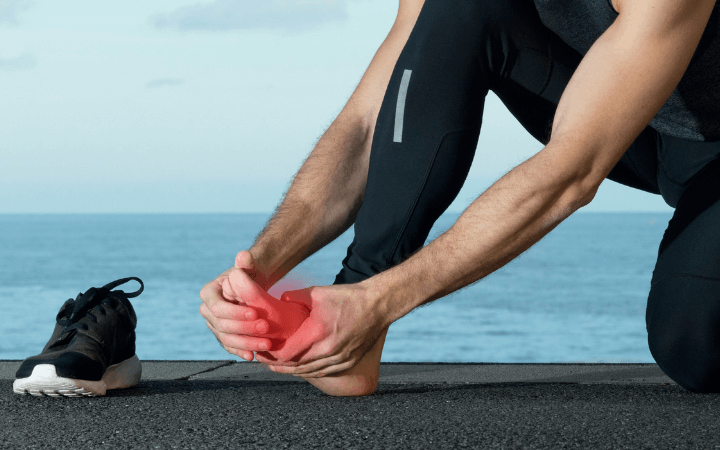
Lisfranc Injury
If you’ve ever dropped something heavy on your foot, it will not be a surprise to learn that each foot contains more than 7000 nerve endings. No wonder they are sensitive to pain.
Ouch! Your feet have an important function: they support your body weight, provide shock absorption when you move, and help you to balance. This makes an injured foot inconvenient as well as painful!
In this blog, we’re delving into midfoot injuries, specifically those that occur to the Lisfranc joint and ligament, known as a Lisfranc injury.
Midfoot anatomy facts
- The midfoot makes up the foot’s arch. It contains 5 of the 7 tarsal bones.
- The Lisfranc joint complex is also known as the tarsometatarsal (say that ten times fast!) or TMT joint complex. This is the junction between the midfoot and forefoot.
- The primary role of the Lisfranc Joint is to stabilise the midfoot. It has very little movement.
- The Lisfranc ligament is Y-shaped; its function is to stabilise the TMT joint.
What is a Lisfranc injury and what causes it?
A Lisfranc fracture is one of the most common foot fractures. Dropping something on your foot is a common way to fracture your Lisfranc joint. Two-thirds of Lisfranc injuries happen when something hits your foot directly, with force. This could be in a motor-vehicle accident, a crush injury, or a fall from height.
One-third of Lisfranc injuries occur indirectly and are more commonly missed, e.g. during sports or activities like horse riding; from household accidents or twisting your foot when you fall.
What are the symptoms of a Lisfranc injury?
Lisfranc injuries range in severity from a mild sprain to a severe fracture. Typically, an injury to the Lisfranc joint or ligament will have the following symptoms:
- Swelling in the midfoot.
- Pain when trying to bear weight, and pain when walking down stairs.
- Bruising to the top and bottom of the foot – bruising on the bottom of your foot indicates you have more likely fractured the bone.
How is a Lisfranc injury treated?
Treatment will depend on the severity of the Lisfranc injury.
For a mild Lisfranc sprain, follow the normal first aid protocols of relative rest, ice, compression and elevation until you are able to see your physio for a thorough assessment. Your physio should then have you back on your feet within weeks.
For severe injuries/fractures, you may need a cast or brace for up to six weeks. Occasionally surgery is required to pin bones in place or fuse them together.
Can physiotherapy help to treat a Lisfranc injury?
Yes. We can help you to manage your injury from diagnosis, to treatment and recovery.
If a Lisfranc fracture is suspected at the initial assessment, we will send you for an x-ray. If a fracture is confirmed, we can apply an appropriate cast, splint or brace once you’ve been to your doctor, or before you go to see them for review. We will provide you with crutches, if needed. As your fracture heals, we will monitor your progress and make adjustments to your cast or splint.
Chronic pain, arthritis or decreased function can occur if the injury is not detected and treated promptly. Physical therapy can assist with recovery, restoring function and strengthening. We will give you a tailored exercise program to help you progress to a full recovery.
If you are looking for support and advice to manage a Lisfranc injury, we are here to help! Give us a call on (08) 9203 7771 or make a booking so we can get you back on your feet.
References:
- Adcox, M. (2017). Recognizing a Lisfranc Fracture. [Online]. Available at: https://www.healthline.com/health/lisfranc-fracture (Accessed 23 March 2022).
- Australian Physiotherapy Association. (2022). Choose physio for Fractures. [Online]. Available at: https://choose.physio/your-lifestage/ageing-well/fractures (Accessed 23 March 2022).
- Beahrs, T. and Weatherford, B. M. (2022). Lisfranc (Midfoot) Injury. [Online]. Available at: (https://orthoinfo.aaos.org/en/diseases–conditions/lisfranc-midfoot-injury/ (Accessed 23 March 2022).
- Whelan, C. (2019). What causes ticklish feet and why some people are more sensitive than others. [Online]. Available at: https://www.healthline.com/health/ticklish-feet#sensitivity (Accessed 23 March 2022).
